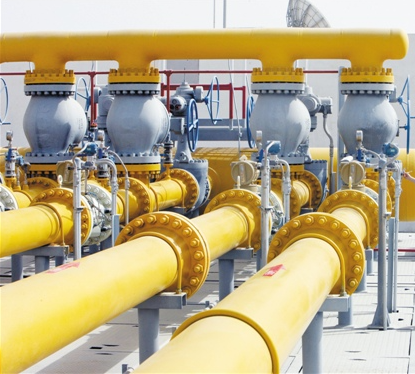Coated steel pipes are widely used in the fields of oil, gas, chemicals, construction, etc. Due to the special properties of their surface coating, they can effectively prevent corrosion and extend their service life. However, coated steel pipes are easily affected by factors such as the environment and loading and unloading operations during sea transportation, resulting in damage to the coating or deformation of the steel pipe, which in turn affects the quality of the product. Therefore, when shipping coated steel pipes by sea, a series of measures must be taken to ensure their safe arrival at the destination. The following are precautions for shipping coated steel pipes by sea:

1. Packaging and protection
Waterproof packaging: Coated steel pipes are sensitive to humid environments, especially during sea transportation, where seawater and moisture may penetrate into the packaging, causing damage to the coating. Therefore, steel pipes should be wrapped with waterproof materials (such as plastic film or waterproof oil paper) to ensure that they are not damp during transportation.
Anti-collision protection: The surface coating of coated steel pipes is easily damaged by collision or friction. It is recommended to use buffer materials (such as foam pads, wooden strips or rubber pads) between steel pipes to isolate and avoid direct contact. At the same time, protective caps or protective sleeves should be used at the ends of the steel pipes to prevent damage to the coating at the ends.
Fixed packaging: Steel pipes should be firmly tied with steel belts or ropes to avoid displacement or collision due to ship shaking during transportation. Be careful not to tie too tightly when tying to avoid damaging the coating.
2. Container selection
Dry and clean container: Coated steel pipes should be loaded in dry and clean containers to avoid residual chemicals, moisture or other pollutants in the container. It is recommended to check the sealing and internal environment of the container before packing.
Ventilation requirements: If the transportation time is long, it is recommended to choose a well-ventilated container to prevent excessive humidity inside the container, causing the coating to get damp or rust.
Fixed in the container: Steel pipes should be evenly distributed in the container and fixed with wooden frames or supports to avoid movement due to ship shaking during transportation. There should be an appropriate gap between the steel pipe and the container wall to prevent direct collision.
3. Loading and unloading operations
Use special lifting equipment: When loading and unloading coated steel pipes, special lifting equipment (such as soft lifting belts or magnetic lifting equipment) should be used, and wire ropes or hard lifting equipment should be avoided to avoid scratching the coating surface.
Handle with care: Avoid rough operation during loading and unloading, ensure that the steel pipe is lifted and placed smoothly, and prevent damage to the coating or deformation of the steel pipe due to collision or falling.
Avoid operations on rainy days: Loading and unloading operations should be avoided as much as possible in rainy days or humid environments to prevent the coating from getting damp or damaged.
4. Transport environment control
Temperature and humidity control: Coated steel pipes are sensitive to temperature and humidity, especially in high temperature and high humidity shipping environments. It is recommended to monitor the temperature and humidity in the container during transportation, and use desiccant or dehumidification equipment when necessary.
Avoid mixing with corrosive substances: Coated steel pipes should not be mixed with corrosive chemicals or other goods that may release harmful gases to prevent chemical corrosion of the coating.
5. Documents and markings
Clear markings: "Fragile", "Moisture-proof", "No Collision" and other signs should be clearly marked on the packaging and the outside of the container to remind loading and unloading personnel and ship owners to pay attention to operations.
Complete transportation documents: Ensure that all transportation documents (such as bills of lading, packing lists, quality certificates, etc.) are complete, and indicate the special protection requirements of the coating so that the shipowner and consignee understand the special characteristics of the goods.
6. Insurance and liability
Purchase transportation insurance: Since coated steel pipes may face various risks during transportation (such as collision, moisture, loss, etc.), it is recommended to purchase comprehensive marine insurance to ensure the safety of the goods.
Clear division of responsibilities: The responsibilities of all parties should be clearly stated in the transportation contract, especially if the coating is damaged due to improper operation during loading and unloading and transportation, the responsible party should bear the corresponding losses.
7. Arrival inspection
Timely inspection: After the goods arrive at the destination, the consignee should promptly unpack and inspect the goods to check whether the coated steel pipes are damaged, deformed or damp. If any problems are found, take photos for evidence immediately and contact the transporter to handle claims in a timely manner.

